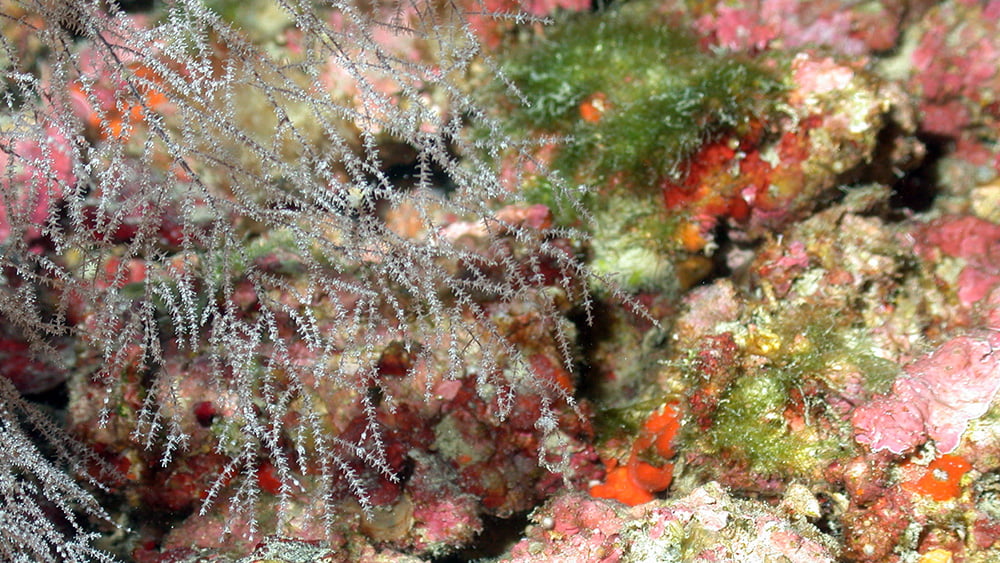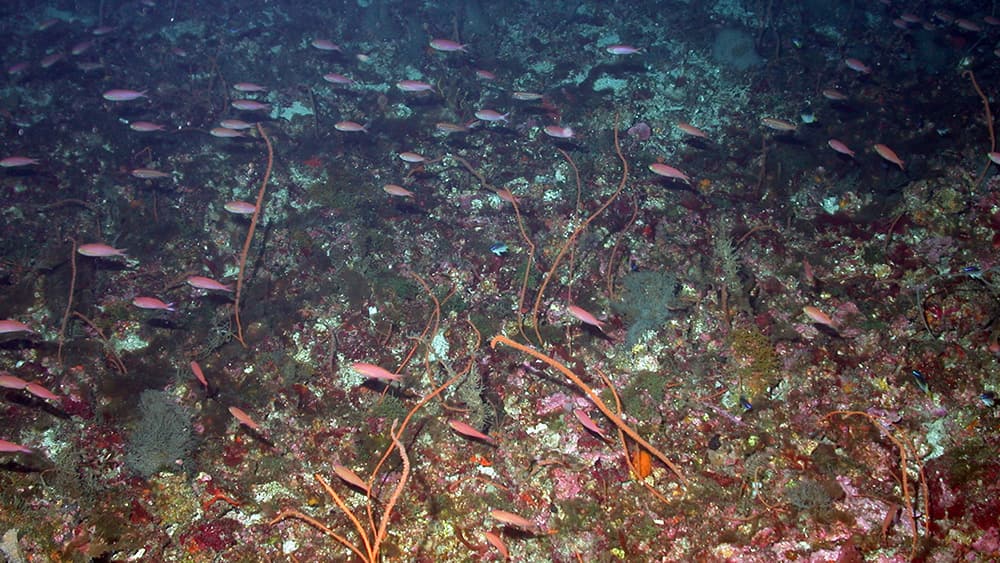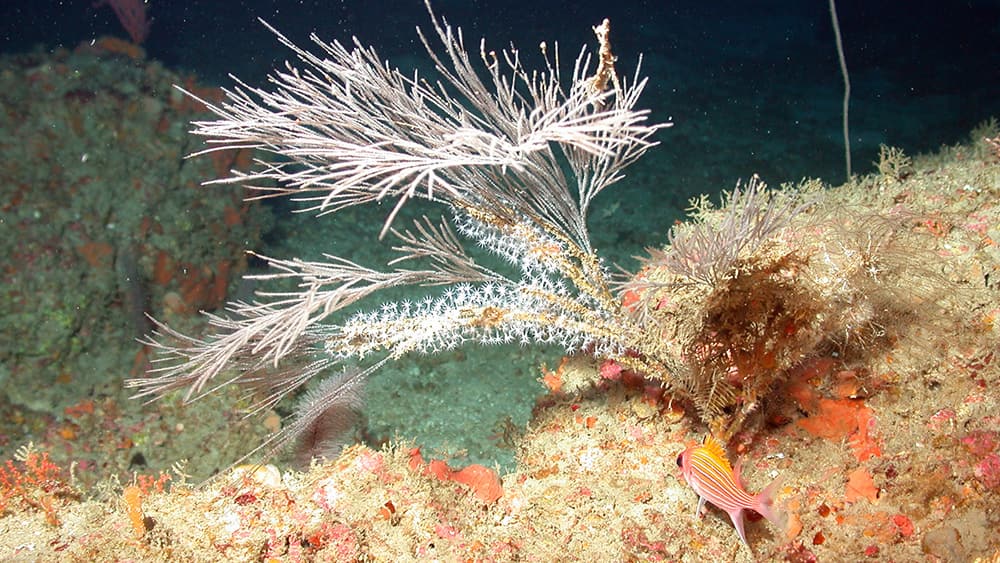East Flower Garden Bank
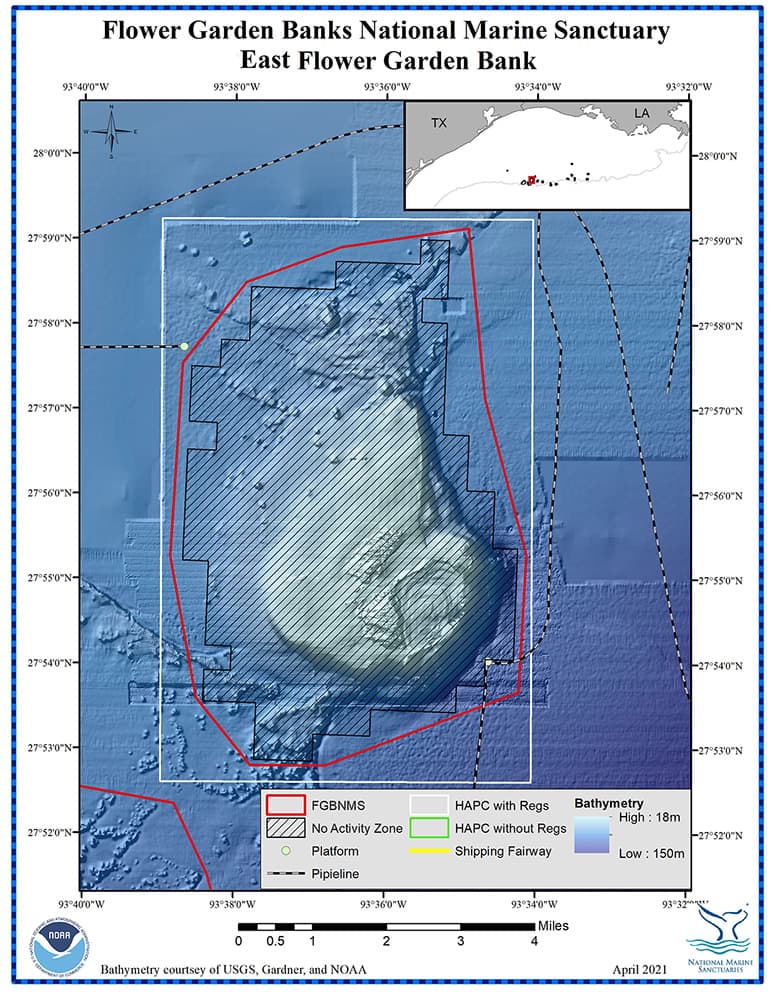
Depth Range: 62-446 feet (19-136 meters)
Distance from Land: 119 miles (192 km)
Area: 28 square miles (73 sq km)
East Flower Garden Bank is a pear-shaped bank located 119 miles (192 km) south of the Texas/Louisiana border and approximately 13 miles east of West Flower Garden Bank. This is one of the two original banks that made up the sanctuary when it was first designated in 1992.
The original boundary for East Flower Garden Bank closely followed the outer edges of the BOEM No-Activity zone, but was later expanded to incorporate additional hard bottom features along the outer edges of the bank.
Coral Reefs
East and West Flower Garden Banks are best known for the beautiful coral reefs located on the shallowest areas of each bank. These are the northernmost coral reefs in the Gulf, thriving at the northern limits of coral survival.
These are also the healthiest coral reefs in the greater Caribbean/Gulf region with over 52% coral cover, which is as much as 5 times the amount of hard coral as other reefs in the region. The corals have literally piled up on one another over thousands of years, creating high profile reefs that rise 15-20 feet (4.6-6.1 meters) above the nearest sand patches in some areas.
The dominant species here are brain and star corals, many of which are considered threatened species (OrbicellaI annularis, Orbicella faveolata, Orbicella franksi). These threatened species account for about 60% of the coral cover at East Flower Garden Bank.

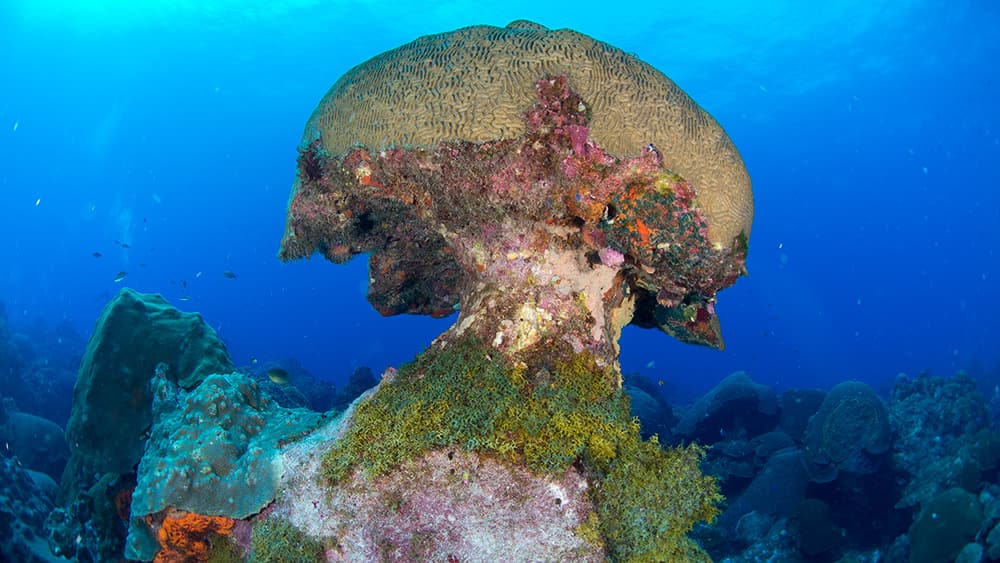

While the coral reef is the most-well known part of East Flower Garden Bank, there are several other notable features in this part of the sanctuary.
HI-A-389-A Platform
When the sanctuary was designated in 1992 there was a single operating gas production platform, High Island A-389-A (HI-A-389-A), located one mile southeast of the reef cap. In 2018, the upper portion of the platform was removed and the rest remains in place as an artificial reef.
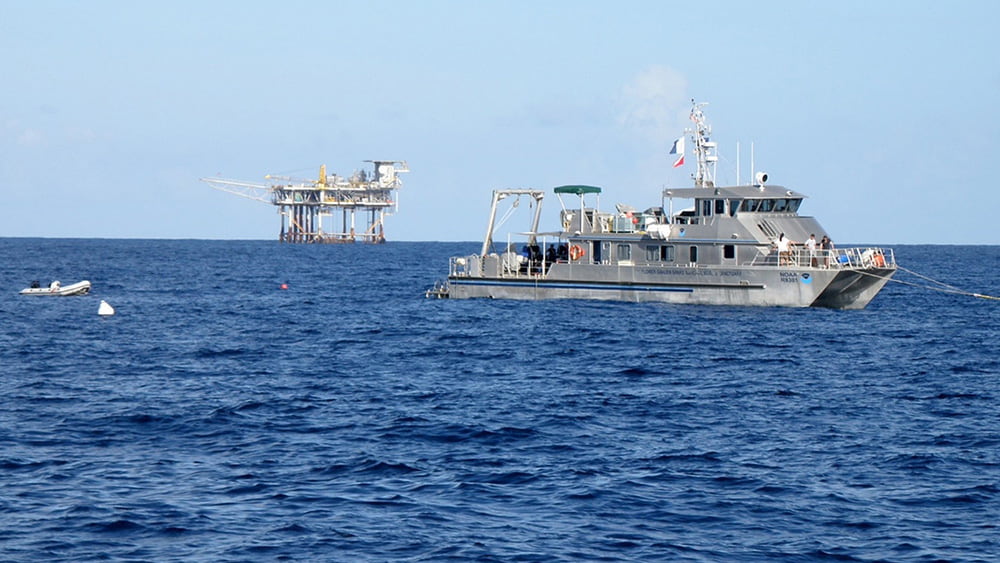
The HI-A-389-A platform was located one mile from the reef at East Flower Garden Bank (where the sanctuary research vessel is moored). Photo: FGBNMS
Brine Seep
Another unique feature of East Flower Garden Bank is a brine seep, where super salty water (over 200 ppt) is seeping out from the salt dome under the bank. This water is very dense, allowing it to settle beneath normal sea water (35 ppt) and form an underwater pool up to 10 inches deep.

The density difference is so distinct, you can see what looks like a puddle even though it’s already underwater. Nothing but bacterial mats survive in this brine seep. Fish swim over it, but can’t live in it.

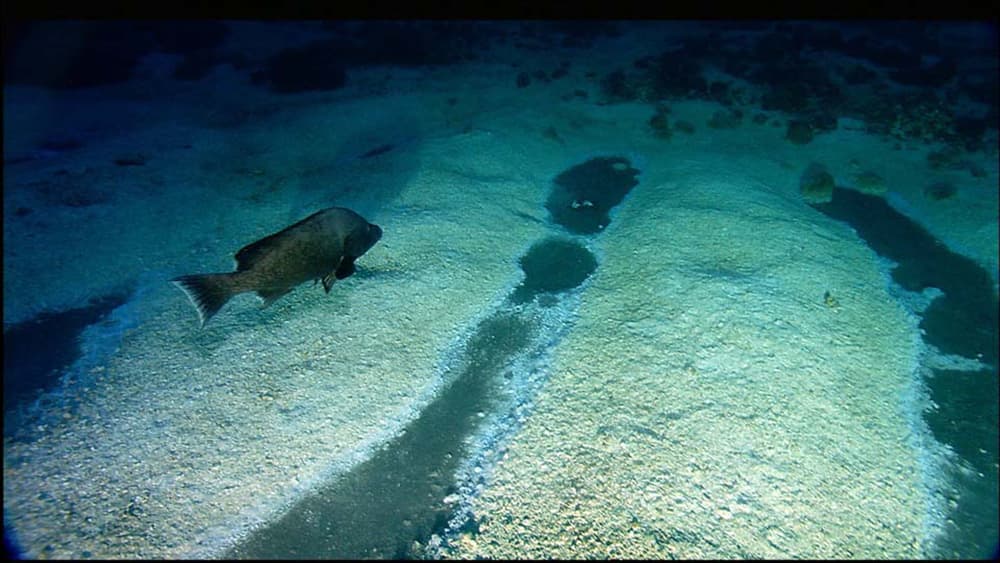

Mesophotic Reefs
Below the reef cap lie deeper mesophotic habitats such as algal reefs, algal nodule zones, and deep coral zones that include populations of black corals and octocorals.
